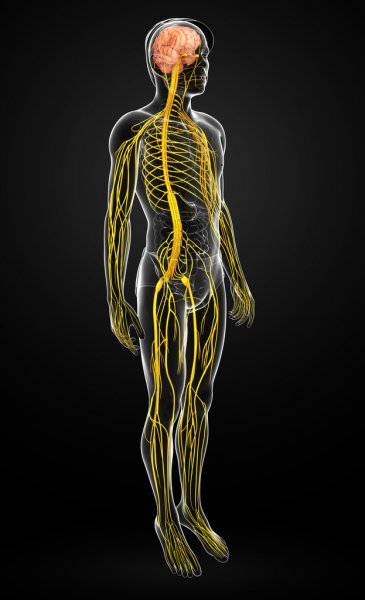what is excretion?
EXCRETION:
The process of separating and removing waste products of metabolism from the body through the discharge of urine, feces, or expired air.
KIDNEY:
An organ, paired, in vertebrates that regulates secretion and osmoregulation as part of the urinary system. Filtration takes place at the site of the glomerulus in the Bowman’s capsule, while the loops of Henle are responsible for taking waste material to be excreted. Millions of nephrons within the renal cortex and renal medulla filter the blood and regulate the volume and composition of body fluids during the formation of urine. A ureter from each kidney carries urine produced in the kidney to the bladder for elimination.
NEPHRONS:
A microscopic coiled tubular structure found in each kidney that consists of a GLOMERULUS, a mass of capillaries that filters the blood, and a renal tubule that produces urine for elimination. Each kidney is estimated to contain about 1 million nephrons.
BOWMAN'S CAPSULE:
A cup-shaped receptacle in the kidney that contains the glomerulus, a semipermeable twisted mass of tiny tubes through which the blood passes and is the primary filtering device of the nephron, a tiny structure that produces urine during the process of removing wastes. Each kidney is made up of about 1 million nephrons. Blood is transported into the Bowman’s capsule from the afferent arteriole that branches off of the interlobular artery. The blood is filtered out within the capsule, through the glomerulus, and then passes out by way of the efferent arteriole. The filtered water and aqueous wastes are passed out of the Bowman’s capsule into the proximal convoluted tubule, where it passes through the loop of Heinle and into the distal convoluted tubule. Eventually the urine passes and filters through the tiny ducts of the calyces, the smallest part of the kidney collecting system, where it begins to be collected and passes down into the pelvis of the kidney before it makes its way to the ureter and to the bladder for elimination.
GLOMERULUS:
A structure, a tiny ball, between the afferent arterioles and efferent arterioles within the proximal part of the nephron of the kidney; located within the Bowman’s capsule. It is composed of a cluster of capillary blood vessels and is involved in the filtration of blood. The glomerulus is a semipermeable structure that allows water and soluble wastes to pass through and then discharges them out of the Bowman’s capsule as urine waste at a rate of about 160 liters or 42.7 gallons per 24-hour period. Most of this is reabsorbed back into the blood. The filtered blood then leaves the glomerulus by way of the efferent arteriole to the interlobular vein. Each kidney contains about 1 million glomeruli. Changes in the glomerulus may be responsible for diabetic kidney disease. Also a nest of nerves in invertebrates found in invertebrate olfactory processing centers; a discrete, globular mesh of densely packed dendrites and axons found in the vertebrate olfactory bulb.
Thanks for visiting our website.We hope you learn something here.our posts are in pending we will post them soon,we will do our best to present you Science and General Knowledge.
Subscribe our website for more posts
Follow us on Facebook:
Follow us on YouTube:







0 Comments